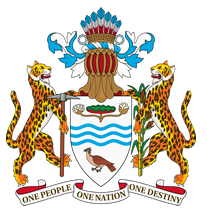Guyana: Government
Key Figures
- Chief of State:
- President Mohammed Irfaan Ali
- Head of Government:
- President Mohammed Irfaan Ali
Overview
- Government Name:
- Co-operative Republic of Guyana
- Constitution:
- Adopted: 1970; Establishes a parliamentary-style government based on the English Model, and a separation of powers with the legislative holding the most power by electing the president
- Government Type:
- Republic

Index of Economic Freedom
Grades each country on a scale of 0 to 100, based on ten freedoms, with 100 representing the greatest amount of economic autonomy from government intervention. Source: Heritage Foundation (2023)
Country Risk Rating
B
Political and economic uncertainties and an occasionally difficult business environment can affect corporate payment behavior. Corporate default probability is appreciable. Source: Coface (2024)
Government Branches
| Main Powers | Election Process | Election Cycle 1 | |
|---|---|---|---|
| Executive | The president and prime minister are responsible for constituting the executive branch of government. |
Indirectly elected by national assembly. |
5 years |
| Judicial | Responsible for constituting the judicial branch of government. |
Appointed by the president. |
Mandatory retirement age of 65 |
| Legislative | Responsible for electing the president and constituting the legislative branch of government. |
The National Assembly has 70 seats, 40 members are directly elected in nationwide constituencies, 25 are in multi-seat constituencies. |
5 years |
Regional Trade Blocs
International Organization Participation [2]
Environmental Agreements [3]
Tax Information [2]
- Tax Authority:
- Information not available
- Tax Name:
- Information not available
Sources:
- ElectionGuide http://www.electionguide.org/
- EY, http://www.ey.com
- CIA World Factbook, https://www.cia.gov/the-world-factbook/
- U.S. Bilateral Relations Fact Sheets http://www.state.gov/r/pa/ei/bgn/


